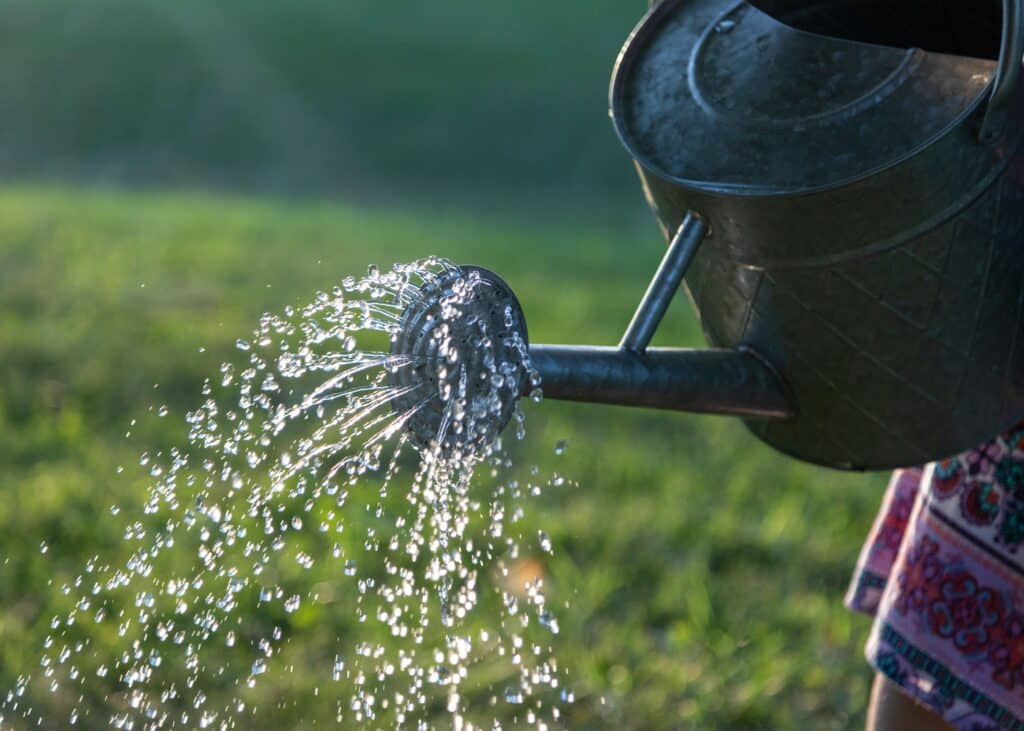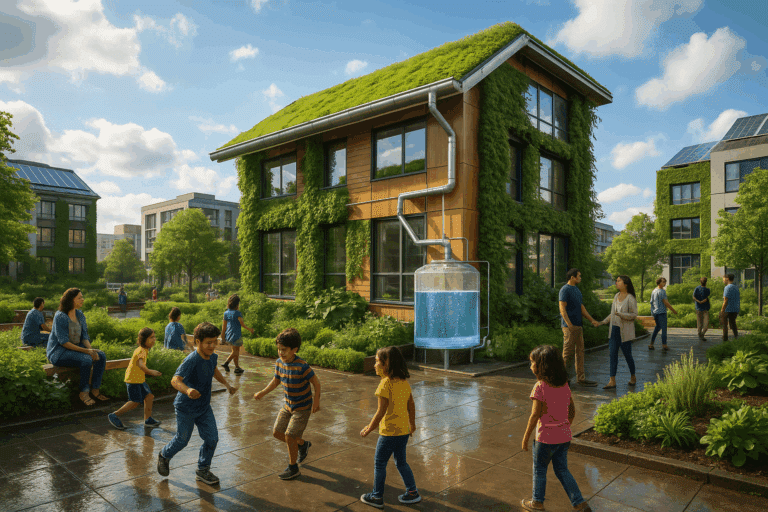One of the crucial tasks often overlooked by many is watering plants in the early morning. But did you know this simple change in your gardening habits can significantly reduce water evaporation loss and maximize moisture for your plants?
In this comprehensive guide, we will unfold the science behind the beneficial effects of early morning watering. It may seem like a small change, but the results can be astonishing, offering your plants optimum hydration and helping you save on your water bills.

We’ll delve into the best practices for a morning watering routine, providing you with practical steps and tips to make the most of this strategy. From the best time to water your plants to the recommended amount of water to use, this guide offers all the information you need to slash evaporation loss.
Moreover, we will also touch on the potential pitfalls of other watering schedules, thus highlighting the importance and benefits of the morning watering routine. We aim to equip you with the knowledge to make informed decisions for your gardening routine.
So, get your watering cans ready and embrace the sunrise! Here’s to a thriving garden, brimming with vitality, all thanks to a mindful morning watering routine. It’s time to maximize moisture and save water, one morning at a time. 🌱💦🌞
Understanding the Evaporation Process
Watering a garden may appear to be a simple act, but a deeper understanding of the evaporation process can dramatically improve your watering efficiency and reduce water waste. Evaporation is the process by which liquid water transitions into vapor and enters the atmosphere. This phenomenon is influenced by several environmental factors, including temperature, humidity, wind speed, and solar radiation.
In the context of gardening, evaporation becomes a challenge when it causes water to be lost from the soil surface or plant foliage before it can reach the roots—the area where it’s truly needed. This loss is especially pronounced during midday, when the sun is at its highest, temperatures soar, and air is driest. Under these conditions, a significant portion of water sprayed on plants may evaporate almost instantly, offering minimal benefit to the plant itself.
To combat this, gardeners must align their watering practices with the natural rhythm of the environment, minimizing loss and maximizing absorption.
The Importance of Timing
The timing of your watering routine plays a critical role in the success of your garden. Early morning, ideally between 5:00 a.m. and 9:00 a.m., is widely regarded as the optimal time for several reasons:
- Cooler air temperatures slow down the evaporation rate, ensuring more water penetrates the soil.
- Lower wind speeds in the morning reduce spray drift and uneven watering.
- Plants have time to absorb moisture before facing midday heat, helping them stay hydrated and better cope with temperature stress.
In contrast, watering during midday results in greater evaporation loss, while evening watering—although cooler—can lead to prolonged moisture on foliage and soil, creating ideal conditions for fungal growth and root diseases.
By understanding evaporation and adjusting your watering time accordingly, you not only save water but also promote deeper root growth, healthier plants, and a more sustainable gardening routine. Pairing this knowledge with practices like mulching and drip irrigation further enhances efficiency, turning your garden into a water-wise and thriving ecosystem.
Implementing a Morning Watering Routine
Watering your garden in the early morning is one of the most effective habits you can establish to promote healthy plant growth and reduce water waste. Mornings offer cooler temperatures, lower wind speeds, and minimal evaporation, allowing more water to reach the plant roots and stay there longer. This routine, when done correctly, can greatly enhance the efficiency and resilience
1. Assess Your Garden’s Needs
Before establishing any watering schedule, it’s important to understand your plants’ specific water requirements. Not all plants need the same amount of water, and those differences can become more pronounced during different seasons or in extreme weather conditions.
- Observe your plants: Signs such as wilting, curling leaves, or browning edges can indicate water stress. However, similar symptoms can also appear with overwatering, so it’s crucial to evaluate carefully.
- Check soil moisture: A simple test involves digging a few inches into the soil with your hand or a trowel. If the soil feels dry and powdery, your plants likely need more water. If it’s damp and sticky, you may be watering too much. Monitoring moisture regularly helps avoid both extremes.
- Group plants with similar needs: Consider grouping plants by water requirements so that each section of your garden can be watered more efficiently.
2. Start Early
Timing is critical. The best time to water is between 5:00 a.m. and 9:00 a.m., when the sun is still low and temperatures are mild. Watering during this window allows:
- Better absorption: Water can seep deeply into the soil before the day heats up.
- Less evaporation: You lose less water to the atmosphere compared to watering in the heat of midday.
- Healthier plants: Moist foliage has time to dry during the day, reducing the risk of fungal diseases that can occur when leaves stay wet overnight.
Early morning watering also prepares your plants for the heat of the day, keeping them hydrated and reducing the shock of rising temperatures. When combined with other techniques like drip irrigation and mulching, this routine becomes a cornerstone of water-wise gardening.he ground and reach the roots of the plants before evaporation rates increase.
Techniques to Reduce Evaporation Loss
Minimizing water loss through evaporation is one of the most effective strategies to improve irrigation efficiency, especially in hot, dry, or windy environments. By employing smart watering practices and complementary methods, gardeners can maximize moisture retention, reduce waste, and support healthier plant growth.
Drip Irrigation
Drip irrigation stands out as one of the most efficient watering techniques for reducing evaporation. Unlike overhead sprinklers, which lose a large portion of water to the air before it even reaches the soil, drip systems deliver water slowly and directly to the root zone of each plant through a network of tubing and emitters.
This method not only minimizes evaporation but also prevents runoff and reduces weed growth, since water is applied only where it’s needed. In addition, drip irrigation supports deep root development, which helps plants become more drought-resistant over time. It’s ideal for raised beds, container gardens, flower borders, and even larger landscapes when properly designed and maintained.
For even greater efficiency, drip systems can be combined with timers and soil moisture sensors, allowing gardeners to automate watering based on actual needs rather than guesswork or rigid schedules.
Mulching
Mulch acts as a natural barrier between the soil and the air, significantly slowing the evaporation process. A 2- to 4-inch layer of organic mulch—such as wood chips, straw, shredded leaves, or compost—helps the soil retain moisture after watering or rainfall. It also shades the soil, which moderates soil temperature and protects roots from extreme heat.
Beyond moisture conservation, mulch brings additional benefits: it suppresses weeds, improves soil structure over time, and enhances the aesthetic of garden beds. For best results, apply mulch around the base of plants, keeping a small gap around stems or trunks to prevent rot.
When drip irrigation and mulching are used together, they create a powerful, water-smart gardening system that is both efficient and sustainable—perfect for conserving water while maintaining a lush, productive landscape.
Monitoring and Adjusting Your Routine
Establishing a consistent watering routine is essential, but long-term garden health requires flexibility and observation. No two days are exactly alike when it comes to environmental conditions, and even small changes in temperature, humidity, wind, and rainfall can influence how much water your plants truly need. That’s why monitoring and adjusting your watering strategy regularly is just as important as choosing the right irrigation method.
Investing in a soil moisture sensor is one of the most effective ways to gain real-time insight into your garden’s hydration status. These devices measure the moisture level at the root zone, giving you accurate data that removes the guesswork from watering decisions. Some advanced models even integrate with smart irrigation controllers, automatically adjusting watering schedules based on current soil conditions.
In addition to technology, visual cues are valuable. Drooping leaves, dry or cracked soil, and slow growth are all signs that your plants may need more water. On the other hand, yellowing leaves, mold, or soggy soil could indicate overwatering, which is just as harmful as underwatering.
Adapting to Weather Changes

Weather is one of the most dynamic influences on garden irrigation. Hot, dry days can significantly increase the rate of evaporation, drawing moisture away from both the soil and plant leaves. During such times, it may be necessary to water more frequently or extend watering duration, especially for shallow-rooted or newly planted species.
Conversely, cooler temperatures and rainy periods naturally provide more moisture and reduce evaporation. During these times, your watering schedule should be adjusted accordingly to avoid unnecessary water use and potential waterlogging.
Monitoring weather forecasts and seasonal trends can help you anticipate changes and plan your routine proactively. Incorporating mulching is another excellent strategy to buffer against weather extremes—it helps retain soil moisture during heatwaves and insulates roots during cooler periods.
A Balanced Approach to Irrigation
Ultimately, the goal of watering is not just to “wet the soil,” but to deliver the right amount of moisture where and when it’s needed. Overwatering and underwatering are both common mistakes that can stress or even kill plants.
By combining technology, observational skills, and an understanding of weather patterns, you create a dynamic and responsive irrigation routine. This leads to healthier plants, more efficient water use, and a garden that can thrive under varying conditions—all while supporting sustainability and reducing water waste.
Watering Wisely Starts with Understanding Evaporation
Mastering the science behind evaporation is one of the most powerful tools a gardener can use to develop an efficient and sustainable watering strategy. While watering may seem like a routine task, doing it without considering the timing and conditions can result in significant water waste and plant stress. By understanding when evaporation is most likely to occur—typically during the hottest and driest parts of the day—you can schedule your watering at times when plants are best able to absorb and retain moisture.
Early morning watering proves to be the most beneficial, allowing water to reach plant roots before being lost to the atmosphere. It also helps prevent fungal diseases, which are more likely to develop when moisture lingers on leaves overnight. Combining this approach with smart techniques like drip irrigation, mulching, and soil monitoring further enhances moisture retention, strengthens plant resilience, and minimizes the need for excessive watering.
In a world where water conservation is becoming increasingly critical, especially in drought-prone regions, small changes in our gardening habits can lead to big environmental impacts. Understanding evaporation and applying that knowledge to your watering schedule ensures that your garden remains healthy and vibrant—while also being part of the solution to our global water challenges.
Conclusion
In conclusion, adopting a morning watering routine is a game-changer when it comes to maximizing moisture and significantly reducing evaporation loss. It’s not only environmentally friendly but also economically beneficial, as it can help save a considerable amount of water over time. Implementing this routine may initially appear daunting, but the long-term benefits it brings to your garden are truly worthwhile.
Remember, the key is to water early in the morning, preferably before sunrise. This allows the water to seep deep into the soil, providing your plants with much-needed hydration and leaving little to no chance for evaporation. By doing so, your plants can thrive, and your garden can bloom in all its glory.
Ultimately, it’s about fostering a sustainable and efficient gardening practice. An optimal watering routine can make a world of difference in your garden’s health and growth. By being mindful of our water usage, we not only nourish our plants but also contribute to a more sustainable world. So let’s make a difference, one garden at a time.
Remember, every drop counts. Maximize moisture, slash evaporation, and let your garden flourish. This small change in routine can be the first step towards a greener, more vibrant garden, and a more sustainable world.



